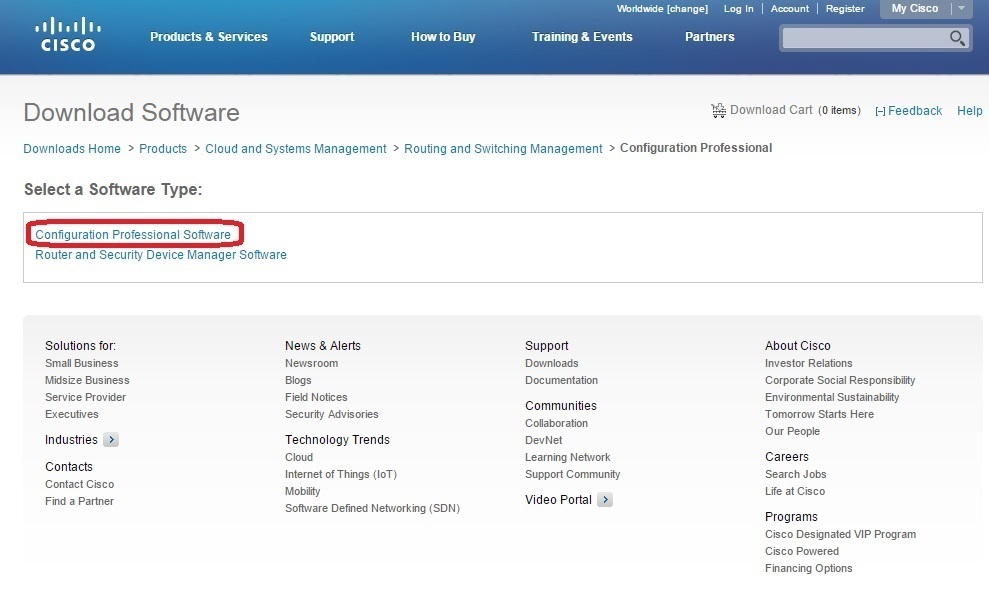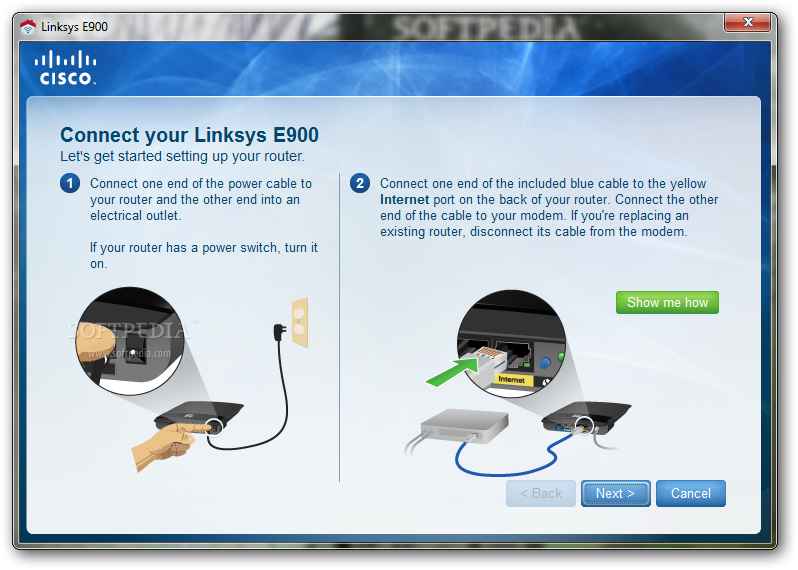Cisco Access Router Manager Download
Downloading and Installing Cisco Router and Security Device ManagerTable Of ContentsDownloading and InstallingCisco Router and Security Device ManagerDecember 14, 2005This document contains instructions on downloading Cisco Router and Security Device Manager (SDM) from the Cisco.com website and installing it on your router. This document is updated as needed.This document contains the following sections:.About SDMSDM is an easy-to-use, Java-based device management tool, designed for configuring LAN, WAN, and security features on a router. SDM is designed for resellers and network administrators of small- to medium-sized businesses who are proficient in basic network design.For fast and efficient configuration of Ethernet networks, WAN connectivity, firewalls and Virtual Private Networks (VPNs), Cisco SDM prompts you through the setup process with wizards. Cisco SDM requires no previous experience with Cisco devices or the Cisco command-line interface (CLI).SDM can reside in router memory or on your PC.Cisco Routers and Cisco IOS Versions Supportedlists the routers and Cisco IOS versions currently supported by SDM.

Note For information about supported network modules and WAN interface cards (WICs), see the Release Notes for Cisco Router and Security Device Manager document for the version of SDM that you have.Memory RequirementsA minimum of 6 MB of free memory is required to support all SDM files. 2 MB of router memory is required to support SDM Express when SDM is installed on the PC, and the SDM files on the PC require 5.5 MB.PC System RequirementsSDM is designed to run on a personal computer that has a Pentium III or faster processor. Step 3 If the username/password dialog is displayed, enter a level 15 username and password to launch SDM.
After SDM launches go to Help About SDM and check the SDM version number. If you have SDM version 1.1 or later, you can let SDM help you update to the latest files by clicking Tools Update SDM From Cisco.com. Follow the instructions in the displayed screens to update the SDM files on your router.Step 4 If the version of SDM on the router is earlier than version 1.1 or if SDM does not launch, complete the remaining tasks in this document to upgrade SDM. If the router is a Cisco 83x model and there are any files named with a.hide extension, they should be removed to conserve router memory before proceeding. Do this by entering the following commands. Step 2 Click Search by feature to choose the features you need, and find the Cisco IOS image that has those features. Feature Navigator provides a web-based form you use to assemble the list of features that you want.
Then specify the platform. Feature Navigator returns a list of image names for that platform that support the features that you specified. Click the name of the Cisco IOS image to go to the download page for that image.Step 3 Download the Cisco IOS image to your PC and then transfer it to the root directory of a TFTP server.
The TFTP server can be a PC with a TFTP server utility.Step 4 Access the router CLI using a Telnet connection or the console port.Step 5 Delete your old Cisco IOS image from flash memory, or from FlashDisk, using the following CLI commands, and responding to the prompts as shown. You can also view the checksum by entering the verify /ios imagename command. If the checksum is invalid, you must repeat Step 4.If you loaded the image to a disk or a slot, use the show disk N command or the show slot N command.Step 9 Verify that the IOS image that you want to use is the first file listed in the show flash listing. If it is not, you must enter the boot system command to direct the router to load the image that you want to use when it boots. Do this as follows:a. Enter configuration mode using the configure terminal command. The new Cisco IOS image is now installed and running on your router.Task 3: Configure Your Router to Support SDMYou can install and run SDM on a router that is already in use without disrupting network traffic, but you must ensure that a few configuration settings are present in the router configuration file.Access the CLI using Telnet or the console connection to modify the existing configuration before installing SDM on your router.Step 1 Enable the HTTP and HTTPS servers on your router by entering the following commands in global configuration mode.
Tip If you are using Internet Explorer on a PC running Windows XP with Service Pack 2, and Internet Explorer displays a message telling you that it has restricted this file from showing active content that could access your computer, choose Internet Options Advanced from the Tools menu, and check Allow active content to run in files on my computer. Then click Apply, and relaunch SDM.Step 2 Enter the username and password of the level 15 user you configured in Task 3. When certificate windows appear, click Yes or click Grant to accept the certificates.Figure 9SDM Launch Page.

Cisco Anyconnect Download
Step 3 To begin using SDM, click the Configure button on the toolbar. SDM displays a taskbar with buttons that launch wizards that will guide you through configuration steps. For example, shows the SDM Create Site to Site VPN window.By choosing the task you want to complete and clicking Launch the selected task, you invoke a wizard that presents a series of configuration tasks, and lets you review the settings you made before delivering the configuration commands to the router. The wizard also simplifies the configuration tasks by supplying default values for some configuration parameters. If you need to change default settings, you can easily do so by clicking the Edit tab, choosing the configuration, and performing needed edits.Figure 11SDM Create Site to Site VPN Window.
Cisco Router Software Download
.Introduction Simplify Router Deployments and ManagementCisco Router and Security Device Manager is a Web-based device-management tool for Cisco routers that can improve the productivity of network managers, simplify router deployments, and help troubleshoot complex network and connectivity issues.Cisco SDM supports a wide range of Cisco IOS Software releases and is available free of charge on Cisco router models from Cisco 830 Series to Cisco 7301. It ships preinstalled on all new Cisco 850 Series, Cisco 870 Series, Cisco 1800 Series, Cisco 2800 Series, and Cisco 3800 Series integrated services routers.Network and security administrators and channel partners can use Cisco SDM for faster and easier deployment of Cisco routers for integrated services such as dynamic routing, WAN access, WLAN, firewall, VPN, SSL VPN, and QoS.Reduce Total Cost of OwnershipCisco customers can reduce the total cost of ownership (TCO) of their Cisco routers by relying on Cisco SDM-generated configurations already approved by the Cisco TAC.
Configuration checks built into Cisco SDM reduce errors. SDM also helps customers avoid potential network issues by proactively monitoring router performance statistics, system logs, and firewall logs in real time.Cisco SDM offers smart wizards and advanced configuration support for LAN and WAN interfaces, Network Address Translation , stateful and application firewall policy, IPS, IPSec VPN, QoS, and policy features. The firewall wizard allows a single-step deployment of high, medium, or low firewall policy settings. Cisco SDM also offers a one-click router lockdown and an innovative security auditing capability to check and recommend changes to router configuration based on ICSA Labs and Cisco TAC recommendations.Cisco SDM is a valuable productivity-enhancing tool for businesses and channel partners and allows them to implement router security and network configurations with reduced cost and increased confidence and ease.Product Literature.